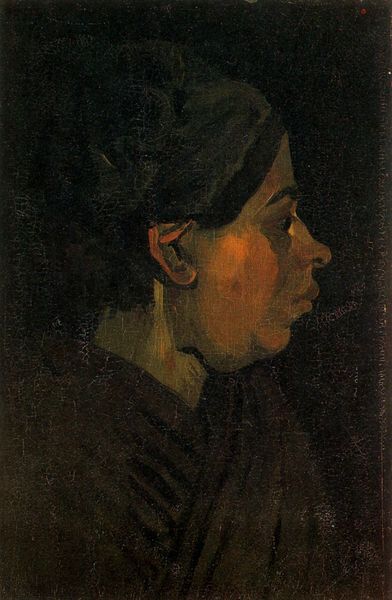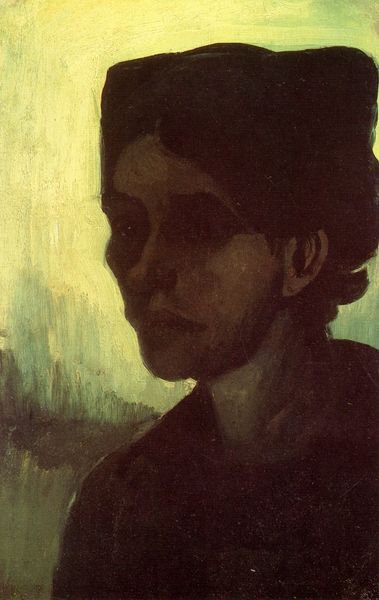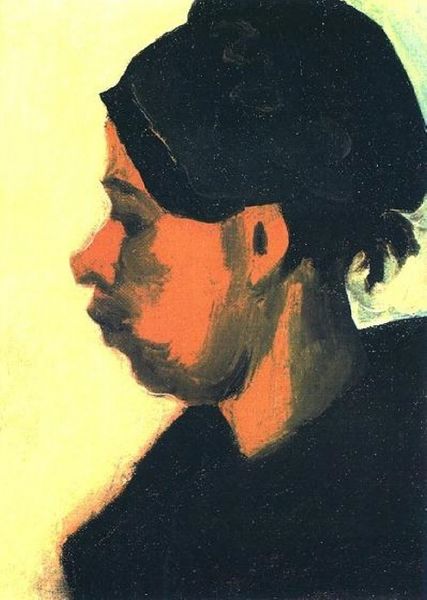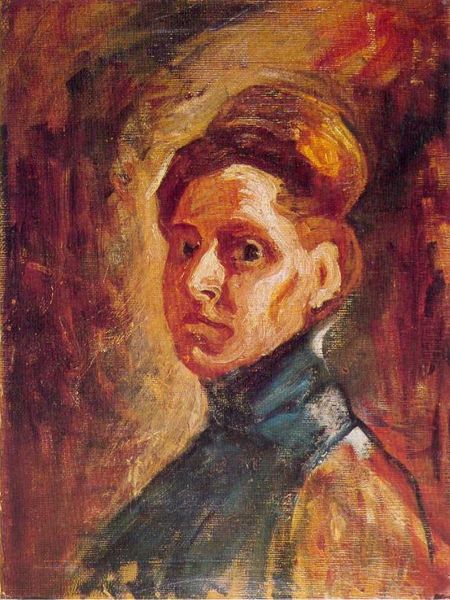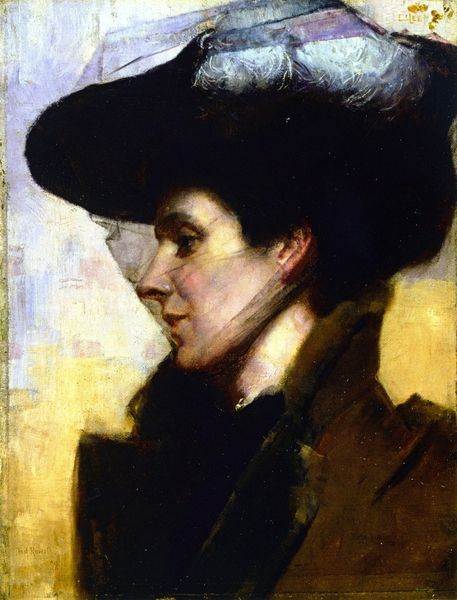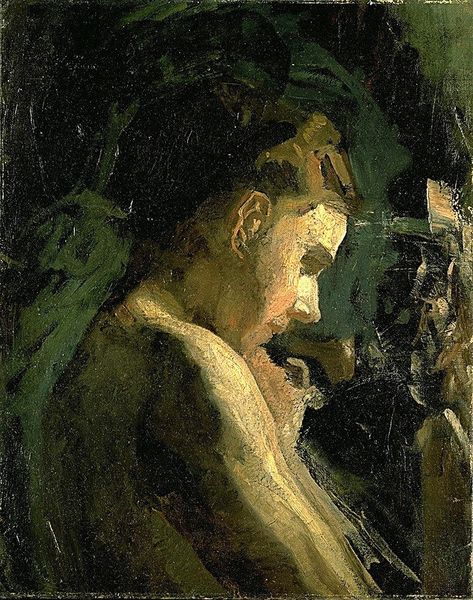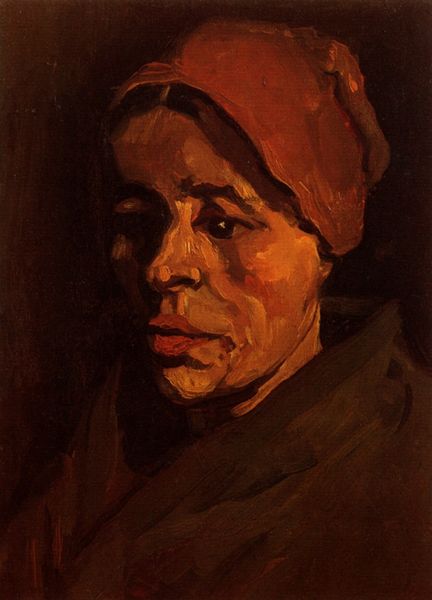
painting, oil-paint
#
portrait
#
painting
#
impressionism
#
oil-paint
#
oil painting
#
post-impressionism
#
realism
Copyright: Public domain
Editor: So, this is Van Gogh’s "Head of a Brabant Peasant Woman with Dark Cap," from 1885, an oil painting. The muted tones create such a somber mood; you can almost feel the weight of her existence. What strikes you when you look at this portrait? Curator: The historical context is crucial here. Consider the power dynamics: a man, Van Gogh, portraying a peasant woman. It speaks to the long history of whose stories get told, and how. Look at her downcast gaze – is it simply a physical posture, or does it reflect a social position, a lack of agency? Editor: I hadn’t thought about it like that. I just saw a realistic portrayal of a woman, perhaps tired from her work. Is her identity only tied to being a 'peasant woman'? Curator: It’s essential to consider the representational politics at play. While we see what may seem like a realistic portrayal, the “peasant woman” archetype has been historically used to symbolize rural life and labor – often romanticized or demonized depending on the political agenda. Think about how the Industrial Revolution created very polarized depictions of rural and city life. Is Van Gogh furthering such a binary in his focus on working-class people? Editor: That gives me a lot to consider. It is more than just capturing a likeness; it’s about the baggage that comes with it, especially how society viewed people like her at the time. Curator: Exactly! It's about unpacking these layers, interrogating the artist's intentions, and understanding the broader societal context in which this work was created and continues to be viewed. Editor: Thank you. Now I have a new perspective on how to see beyond the surface and appreciate the deeper narrative. Curator: My pleasure! Art invites us to confront uncomfortable truths and see the world through multiple lenses.
Comments
No comments
Be the first to comment and join the conversation on the ultimate creative platform.
